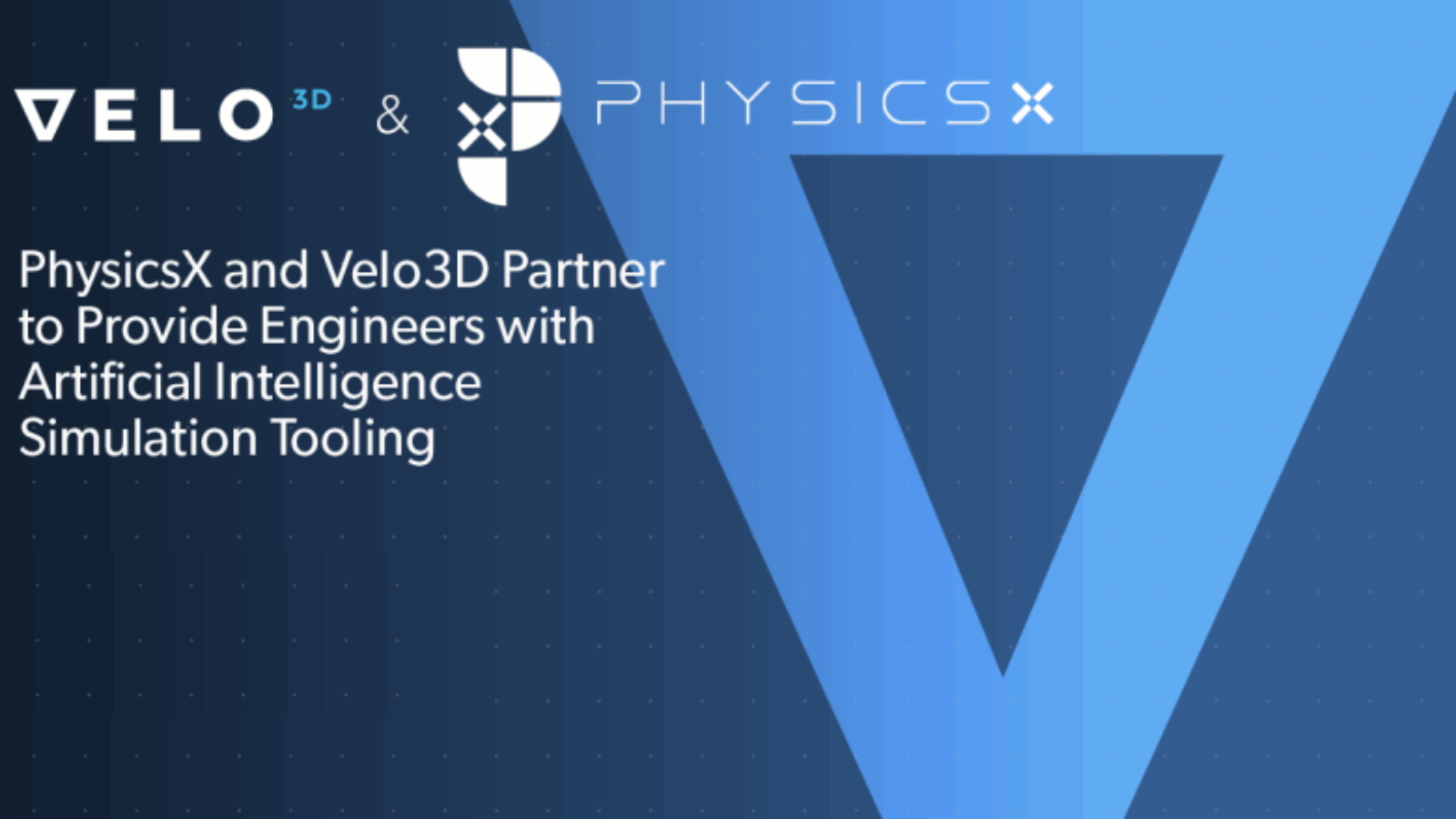Velo3D, a leading metal additive manufacturing technology company for mission-critical parts, has entered a strategic partnership with PhysicsX, through Velo3D’s Technical Partner Program. The partnership gives Velo3D customers access to PhysicsX’s AI-enabled physics simulation workflows to hyper-accelerate simulation loops, improve simulation fidelity, and algorithmically explore complex design spaces to unlock new performance levels. It also provides PhysicsX customers with access to some of the most advanced metal AM capabilities currently available – enabling them to produce novel, highly optimized part designs, with ease.
“We started working with PhysicsX when we were building the Sapphire XC printer because we needed to optimize the flow of gas in the printer build chamber to eliminate soot build-up around the laser windows of the system,” said Benny Buller, Founder, and CEO of Velo3D. “We quickly realized that PhysicsX’s capabilities could be a big boon to many of our customers who are pushing design performance limits. After working closely with them over the past two years, we’ve formalized our partnership to expose customers to the engineering synergy that exists by combining both companies’ technologies.”
PhysicsX’s Simulation for Additive Manufacturing (SFAM) is a key component of the company’s processes that makes previously unobtainable part and system performance achievable and manufacturable. Through the use of multi-physics simulation with ultra-fast deep learning models, PhysicsX optimizes designs to maximize performance. Engineers and scientists can now rapidly optimize designs and improve design-to-production processes – from combustion efficiency improvements to manufacturing yield. It combines traditional computer-aided engineering (CAE) with machine learning capabilities to replicate the physics of various real-world environments.
Manufacturing on Demand
Compared to traditional CAE simulators, PhysicsX’s AI-powered technology can greatly increase the number of design cycles that are possible over a specific timeframe and better fill in the gaps of numerical simulation with real-world data – all to find the true limits of the physics behind the challenge. This enables engineers to extensively search a complex design space without imposing simplified design assumptions, and to have the confidence that those designs are reliably manufacturable at high quality.
“PhysicsX supports customers in some of the most important industries of our time, including aerospace, automotive, sustainability, and renewables,” said Robin Tuluie, Founder, and Co-CEO of PhysicsX. “Our technology can be deployed to evaluate performance in a variety of categories, such as system performance, efficiency, weight, noise, and other criteria. Through PhysicsX, engineers have improved reduced emissions from aircraft and road vehicles, won world championships in MotoGP, and increased the performance of wind and hydro turbines. We’re excited about this partnership and that by working with both PhysicsX and Velo3D, customers will be able to quickly realize unparalleled performance gains for their products without compromising on reliability or additive build quality.”
Velo3D works with a variety of partners including contract manufacturers, commercial distributors, software and simulation providers, post-processing solutions, and academic institutions to enable customers to build the parts they need, speed up development, and reduce product costs. Its Technical Partner Program is focused on providing Velo3D customers with powerful technology and services that complement its fully integrated AM solution.
You might also like:
Over 100 Xact Metal customers are using Materialise software: “We have been working with Materialise since the foundation of Xact Metal six years ago”, said Juan Mario Gomez, Xact Metal CEO. “For over 20 years Materialise has been a front-runner in the success of industrial adoption of metal power-bed fusion. We have worked together to bring new solutions including Materialise Print for Xact Metal, Materialise Auto-Scaffold for Xact Metal, the Dental Module, and Multi-Optic Laser Control.”
* This article is reprinted from 3D Printing Media Network. If you are involved in infringement, please contact us to delete it.
Author: Edward Wakefield


Leave A Comment